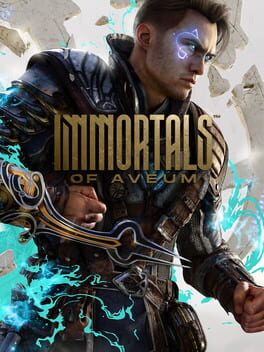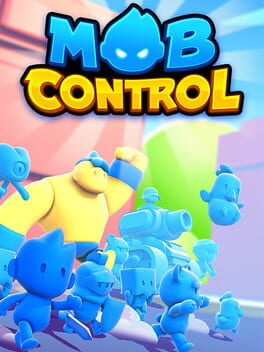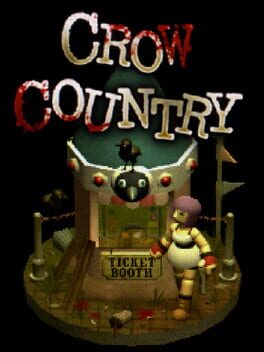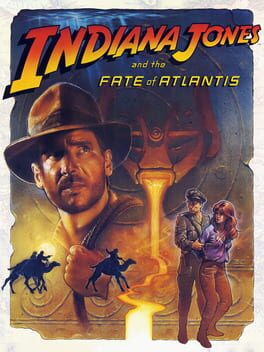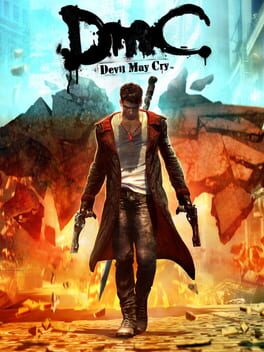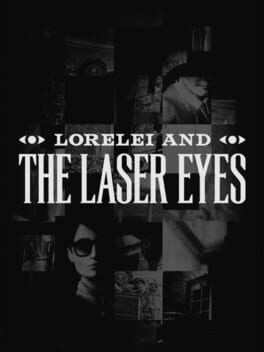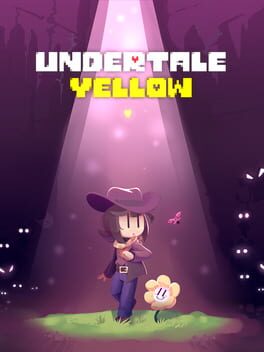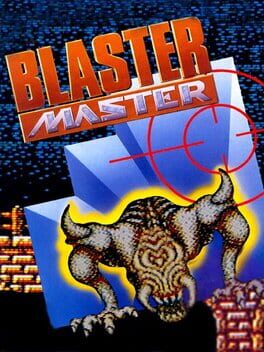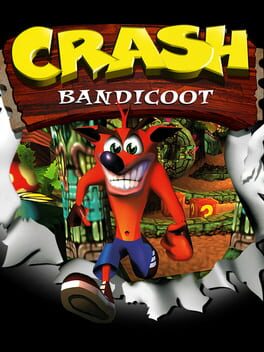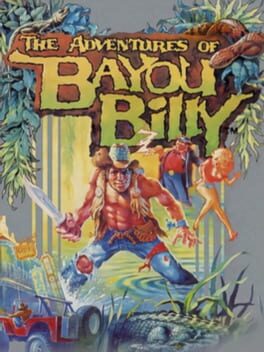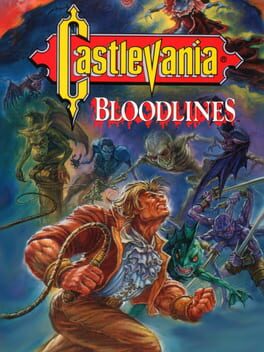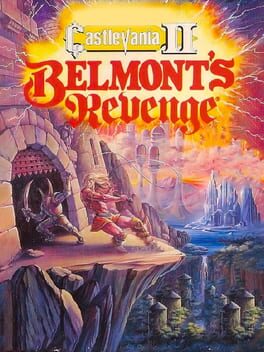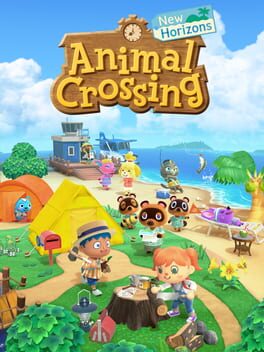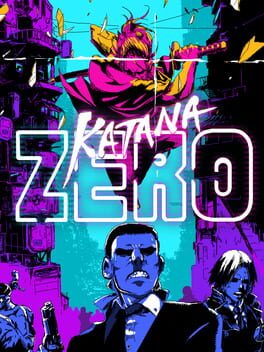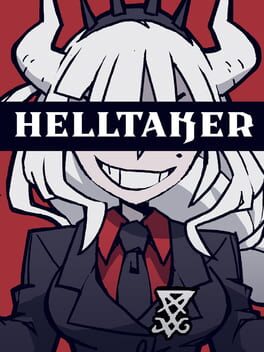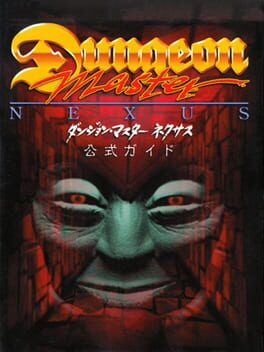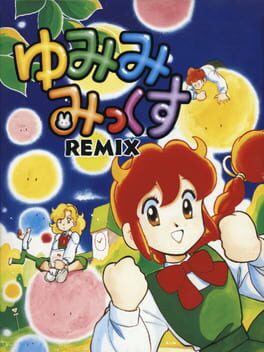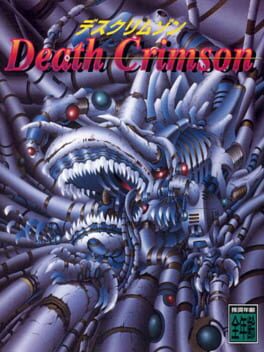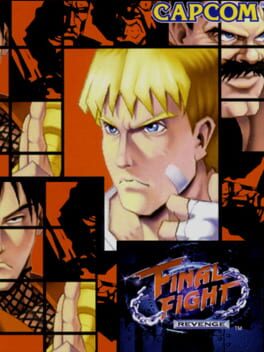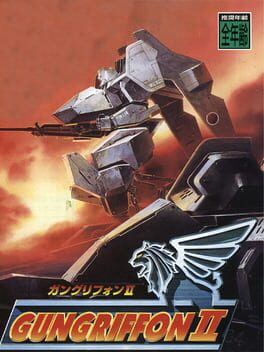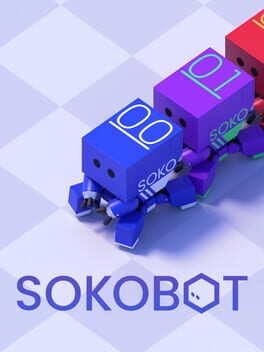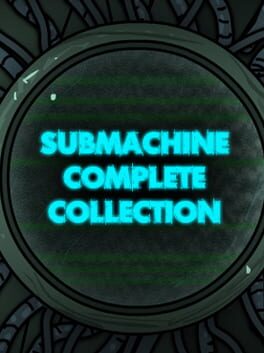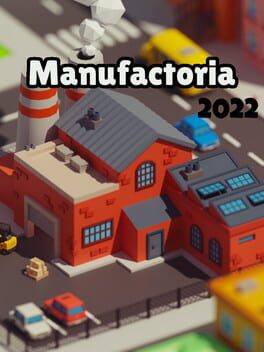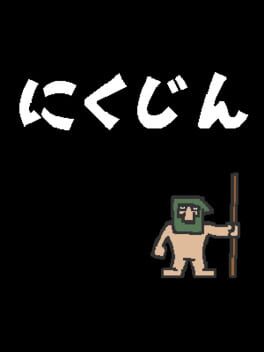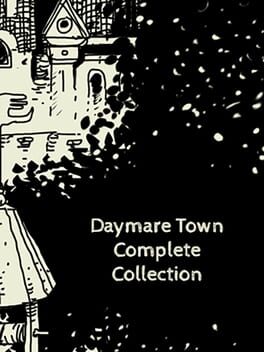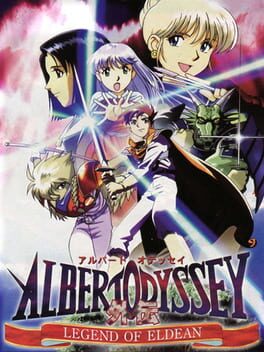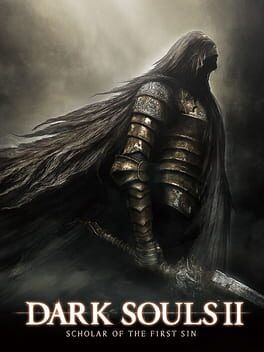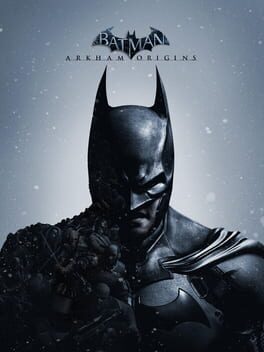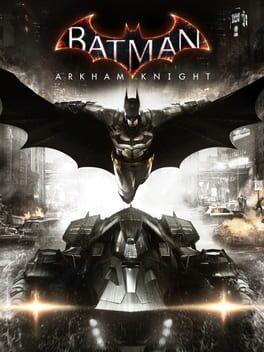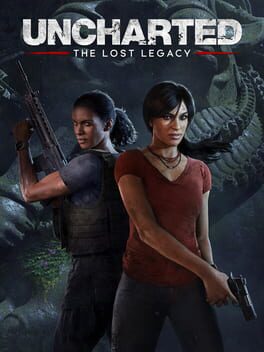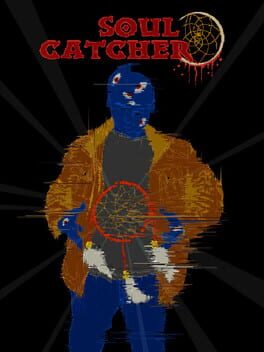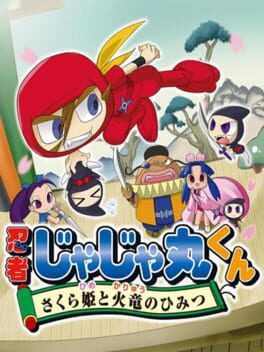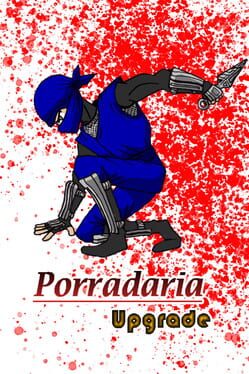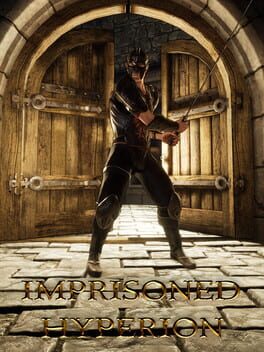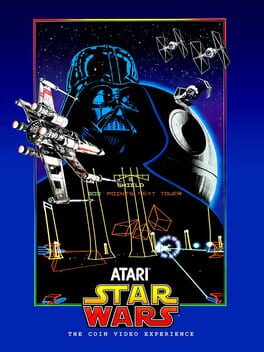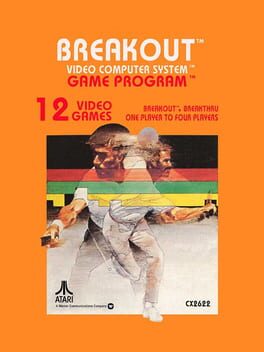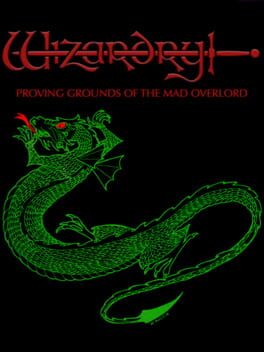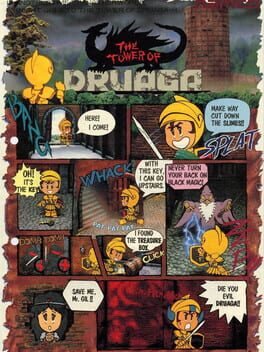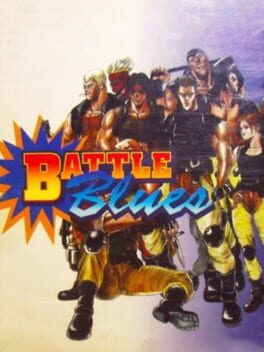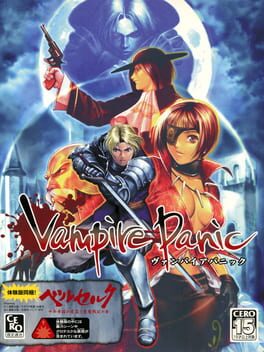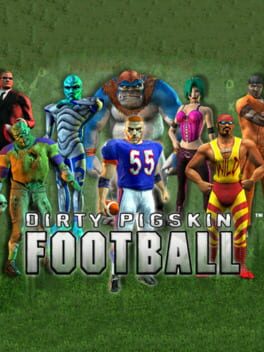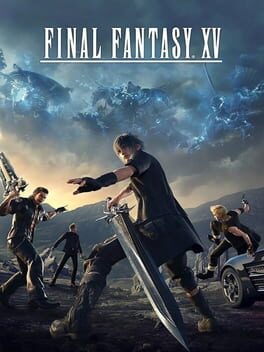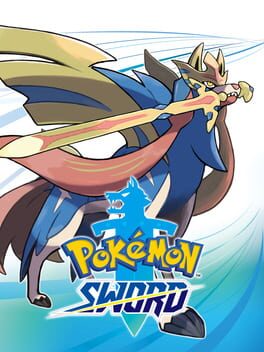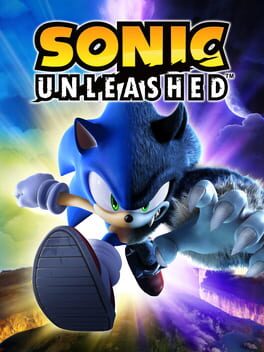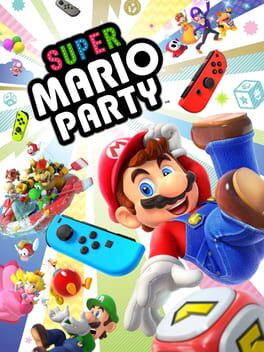psychbomb
BACKER
407 reviews liked by psychbomb
Silent Hill 2
2001
silentchad2004:
using data mining, conventional mining, divination, and star charts I've uncovered shocking lore implications involving the 1999 teen choice awards, eddie's skull circumference, and the last herakleopolitan pharaohs that challenge everything you thought you knew about james. it all starts with the hex code for his jacket, which I'm sure many of you already noticed is #303828, a clear reference to the roland TB-303 commonly used in chicago acid house. to understand this better we'll first need to return to the topic of jean baptiste point du sable's whereabouts in 1780 and how they tie in directly with merikare of the 10th dynasty[...]
the fans:
obviously. it's soo obvious
masahiro ito:
😭😭😭
using data mining, conventional mining, divination, and star charts I've uncovered shocking lore implications involving the 1999 teen choice awards, eddie's skull circumference, and the last herakleopolitan pharaohs that challenge everything you thought you knew about james. it all starts with the hex code for his jacket, which I'm sure many of you already noticed is #303828, a clear reference to the roland TB-303 commonly used in chicago acid house. to understand this better we'll first need to return to the topic of jean baptiste point du sable's whereabouts in 1780 and how they tie in directly with merikare of the 10th dynasty[...]
the fans:
obviously. it's soo obvious
masahiro ito:
😭😭😭
Immortals of Aveum
2023
Mob Control
2021
I played this for about an hour and a half last night, eyes glazed over, podcast in the background, up way too late, feeling nothing. I understand iPad babies, I get the hype. This is not a good game, but it brings a kind of sweet numbness that I can fall into. A void of nothingness to placate my mind. No more thoughts bearing down on me. It all leads to, just like The Elder Scrolls
oblivion.
oblivion.
Crow Country
2024
After years of drift towards third-person action, survival horror finally returns to its roots: dunking your entire arm into every single trashcan you can find and showing disobedient vending machines and lockers the righteous fury of your boot heel.
Thank God the indie market is so robust these days, because the increasing homogenization of the modern big budget game and shrinking genre space therein means you wouldn't get proper survival horror otherwise. Crow Country and others like Signalis have been filling that void, but despite clearly playing to the charm of PlayStation era horror with its visuals - especially with its character models, which look as though they've been unearthed from an old Net Yaroze kit - Crow Country is no tired pastiche. It's safe rooms, puzzles, and resource management might harken to a design ethos that was at one point more commonplace, but these elements feel authentic and borne from a place of appreciation and understanding.
Nowhere is this more strongly felt than in the park's layout and the way in which the player navigates it. The amusement park theme allows for neatly defined areas with their own theming and unique attractions, with hidden passages, back rooms, cast tunnels, and a subterranean network serving as the connective tissue between each "land" in a way that feels appropriate for the setting while serving to make the park feel highly interconnected. Crow Country is great at providing a sense of space while conveying where the player should go and what to do next. I never felt lost or completely stumped by a puzzle and was consistently engaged and encouraged to revisit old locations to explore - the part of my brain that starts processing how I want to route my way through a game activated pretty early, and as far as I'm concerned, that's a sign that a survival horror game is living up to the promise of its genre.
The setting is also small. Crow Country is less Disneyland, more Santa's Village, so one way developer SFB Games succeeds in making repeated loops through the park threatening is by gradually introducing more enemies and traps to familiar locations. As the time of day progresses, rain and darkness further obscure the player's vision, and boobytrapped pick-ups begin to litter the map to prey on the sense of trust they've developed with their environment. I sprinted my way through the opening two hours, juked most enemies and picked up any crap I saw laying on the ground. By hour five, I was walking everywhere, stopping frequently, side-eyeing boxes of ammo, and finding that I actually had to conserve what I had due to the increased expectation that I shoot some damn "guests."
I also appreciate Crow Country for telling a complete and coherent story, something I think a lot of horror games have pushed away from. I think the Five Nights series has poisoned the genre and led a lot of other indie horror creators to believe a complex and intentionally vague narrative is the best way to ensure franchise longevity. Keep posing questions, provide no answers. I get it, sometimes it's best to let the audience fill in gaps, you don't want over-explain horror, but in the hands of a weak writer, the "unknown" can just be a euphemism for "nothing."
That's not to say Crow Country fails to raise any questions of its own, rather that in true PSX survival horror fashion, you're given all the clues you need to form the big picture through memos, context, and dialog. How well you do that is entirely dependent on how much you're paying attention, and whether you view Crow Country as being so cliched that its horror can be explained by way of Resident Evil and Silent Hill. I was extremely satisfied by the ending, which leaves just enough unanswered that you'll still have something to think of without feeling like you'll need to consult a YouTube series or read like, seven fucking books and play a dozen more games. An indie horror game with a conclusion that is both cogent and earned, thank christ.
So make the most of your Memorial Day weekend and bring the whole family down to Crow Country. Come ride our newest attraction: The Seven Seas, and discover new types of bacteria. Remember, vets and children under 6 get in free!
Thank God the indie market is so robust these days, because the increasing homogenization of the modern big budget game and shrinking genre space therein means you wouldn't get proper survival horror otherwise. Crow Country and others like Signalis have been filling that void, but despite clearly playing to the charm of PlayStation era horror with its visuals - especially with its character models, which look as though they've been unearthed from an old Net Yaroze kit - Crow Country is no tired pastiche. It's safe rooms, puzzles, and resource management might harken to a design ethos that was at one point more commonplace, but these elements feel authentic and borne from a place of appreciation and understanding.
Nowhere is this more strongly felt than in the park's layout and the way in which the player navigates it. The amusement park theme allows for neatly defined areas with their own theming and unique attractions, with hidden passages, back rooms, cast tunnels, and a subterranean network serving as the connective tissue between each "land" in a way that feels appropriate for the setting while serving to make the park feel highly interconnected. Crow Country is great at providing a sense of space while conveying where the player should go and what to do next. I never felt lost or completely stumped by a puzzle and was consistently engaged and encouraged to revisit old locations to explore - the part of my brain that starts processing how I want to route my way through a game activated pretty early, and as far as I'm concerned, that's a sign that a survival horror game is living up to the promise of its genre.
The setting is also small. Crow Country is less Disneyland, more Santa's Village, so one way developer SFB Games succeeds in making repeated loops through the park threatening is by gradually introducing more enemies and traps to familiar locations. As the time of day progresses, rain and darkness further obscure the player's vision, and boobytrapped pick-ups begin to litter the map to prey on the sense of trust they've developed with their environment. I sprinted my way through the opening two hours, juked most enemies and picked up any crap I saw laying on the ground. By hour five, I was walking everywhere, stopping frequently, side-eyeing boxes of ammo, and finding that I actually had to conserve what I had due to the increased expectation that I shoot some damn "guests."
I also appreciate Crow Country for telling a complete and coherent story, something I think a lot of horror games have pushed away from. I think the Five Nights series has poisoned the genre and led a lot of other indie horror creators to believe a complex and intentionally vague narrative is the best way to ensure franchise longevity. Keep posing questions, provide no answers. I get it, sometimes it's best to let the audience fill in gaps, you don't want over-explain horror, but in the hands of a weak writer, the "unknown" can just be a euphemism for "nothing."
That's not to say Crow Country fails to raise any questions of its own, rather that in true PSX survival horror fashion, you're given all the clues you need to form the big picture through memos, context, and dialog. How well you do that is entirely dependent on how much you're paying attention, and whether you view Crow Country as being so cliched that its horror can be explained by way of Resident Evil and Silent Hill. I was extremely satisfied by the ending, which leaves just enough unanswered that you'll still have something to think of without feeling like you'll need to consult a YouTube series or read like, seven fucking books and play a dozen more games. An indie horror game with a conclusion that is both cogent and earned, thank christ.
So make the most of your Memorial Day weekend and bring the whole family down to Crow Country. Come ride our newest attraction: The Seven Seas, and discover new types of bacteria. Remember, vets and children under 6 get in free!
The forgotten king.
It's always Sam & Max, Day of the Tentacle, Secret of Monkey Island that come up when the conversation turns to the classic Lucasarts point 'n' clicks. And they're great games, worthy of being in the conversation. But Fate of Atlantis? That's where the real heat is.
First off: the tone is pitch perfect. Everything about Fate of Atlantis feels like an Indiana Jones movie, from the dialogue to the locations to the plot and beyond. Jones is cynical, stubborn, a bit sexist. His co-star - Sophia Hapgood - gets under his skin, holds her own, spars with him verbally. You trot the globe with the classic map screen, break out the whip, reference previous adventures. It's glorious, as on point as it could be, the secret fourth movie.
But the real secret, the best part? There are three distinct paths through the game, triggered by an early dialogue choice. Want the classic point 'n' click experience? That's the wits path. Want more action? Fists. The best, however, is team, with Sophia coming along and bringing that pulp adventure vibe to life.
There's more. The locations change on each path, the puzzles and dialogue as well. And those puzzles themselves often have multiple solutions, both within their paths and between playthroughs, some light randomization changing locations of objects and the solutions to reach them. Moreover, hidden in all that is a wealth of optional dialogue, quips and snarks, little tidbits to discover on that second or third playthrough.
Moon logic puzzles are almost entirely absent, benign enough when encountered due to the self-contained nature of the scenarios. There's a labyrinth at one point, which is never a favorite, a door maze as well. Minor issues in the end, and nothing that tarnishes the crown rightfully owed to Lucasart's finest adventure game.
It's always Sam & Max, Day of the Tentacle, Secret of Monkey Island that come up when the conversation turns to the classic Lucasarts point 'n' clicks. And they're great games, worthy of being in the conversation. But Fate of Atlantis? That's where the real heat is.
First off: the tone is pitch perfect. Everything about Fate of Atlantis feels like an Indiana Jones movie, from the dialogue to the locations to the plot and beyond. Jones is cynical, stubborn, a bit sexist. His co-star - Sophia Hapgood - gets under his skin, holds her own, spars with him verbally. You trot the globe with the classic map screen, break out the whip, reference previous adventures. It's glorious, as on point as it could be, the secret fourth movie.
But the real secret, the best part? There are three distinct paths through the game, triggered by an early dialogue choice. Want the classic point 'n' click experience? That's the wits path. Want more action? Fists. The best, however, is team, with Sophia coming along and bringing that pulp adventure vibe to life.
There's more. The locations change on each path, the puzzles and dialogue as well. And those puzzles themselves often have multiple solutions, both within their paths and between playthroughs, some light randomization changing locations of objects and the solutions to reach them. Moreover, hidden in all that is a wealth of optional dialogue, quips and snarks, little tidbits to discover on that second or third playthrough.
Moon logic puzzles are almost entirely absent, benign enough when encountered due to the self-contained nature of the scenarios. There's a labyrinth at one point, which is never a favorite, a door maze as well. Minor issues in the end, and nothing that tarnishes the crown rightfully owed to Lucasart's finest adventure game.
Having rolled credits, I still don't understand why this game exists. What was the intention behind this game? When you make a sequel to a video game how do you evolve from the original? What do you fix, what do you do differently, what do you add? Hellblade 2 does none of those things and instead doubles down on the design template of the original game - which was released 7 years ago. What we're left with is essentially the first game again yet somehow worse in some areas.
I understand the desire for something like Hellblade. Yes, the game is gorgeous. It's a visual showcase of Unreal Engine 5 tech, I liked looking at the shiny rocks and trees and volumetric fog tech. But underneath all that is a hollow and nauseatingly linear "game" that refuses to attempt anything new.
I think my biggest gripe with the game is the writing and narrative devices. The first game was novel and unique in how it presented itself, however in Hellblade 2, they use the same voices in your head and the same 3D audio trickery to the point where it feels gimmicky now. It also feels like they've upped the frequency at which the voices are talking, to the point where I was subconsciously ignoring them, even if they were expositing key narrative information.
I also feel like this doubling down on the original themes and usage of psychosis or schizophrenia comes off as hokey or juvenile, rather than whatever I assume the devs intended. I don't think that presenting Senua's mental illness as some sort of in-universe superpower that can help save the land and its people is a smart decision narratively, and I think can be rather insulting depending on how you view the game. With the first game, it was Senua coming to terms with herself, which is a much more honest and natural way to explore the themes they wanted to present. The insistence on this narrative device becomes the game's weakness. How do you write a sequel while still relying on these themes and growing the character past the first game? You don't. It's just not the right decision to make.
As a game, it's the same as the first just with more production value behind it. Nicer animations for the shallow combat. The puzzles are the same albeit easier than the first as they removed a lot of the originals jank and the voices in your head help you solve them. The music is fun, and the performances are great. Ultimately the writing is what falls flat for me and because the game relies on it so heavily it drags the whole experience down with it.
I think Ninja Theory is talented, there are moments in this game where I was seriously impressed by the animation work or some of the cinematic sequences. I just wish they would spread their wings a bit and deliver something more rather than limit themselves like this.
I pray they don't make a Hellblade 3. Please just make Enslaved 2 or something I don't know make a video game again for godsakes!
I understand the desire for something like Hellblade. Yes, the game is gorgeous. It's a visual showcase of Unreal Engine 5 tech, I liked looking at the shiny rocks and trees and volumetric fog tech. But underneath all that is a hollow and nauseatingly linear "game" that refuses to attempt anything new.
I think my biggest gripe with the game is the writing and narrative devices. The first game was novel and unique in how it presented itself, however in Hellblade 2, they use the same voices in your head and the same 3D audio trickery to the point where it feels gimmicky now. It also feels like they've upped the frequency at which the voices are talking, to the point where I was subconsciously ignoring them, even if they were expositing key narrative information.
I also feel like this doubling down on the original themes and usage of psychosis or schizophrenia comes off as hokey or juvenile, rather than whatever I assume the devs intended. I don't think that presenting Senua's mental illness as some sort of in-universe superpower that can help save the land and its people is a smart decision narratively, and I think can be rather insulting depending on how you view the game. With the first game, it was Senua coming to terms with herself, which is a much more honest and natural way to explore the themes they wanted to present. The insistence on this narrative device becomes the game's weakness. How do you write a sequel while still relying on these themes and growing the character past the first game? You don't. It's just not the right decision to make.
As a game, it's the same as the first just with more production value behind it. Nicer animations for the shallow combat. The puzzles are the same albeit easier than the first as they removed a lot of the originals jank and the voices in your head help you solve them. The music is fun, and the performances are great. Ultimately the writing is what falls flat for me and because the game relies on it so heavily it drags the whole experience down with it.
I think Ninja Theory is talented, there are moments in this game where I was seriously impressed by the animation work or some of the cinematic sequences. I just wish they would spread their wings a bit and deliver something more rather than limit themselves like this.
I pray they don't make a Hellblade 3. Please just make Enslaved 2 or something I don't know make a video game again for godsakes!
DmC: Devil May Cry
2013
i'd wager there are many who try to undertake a more fair critical analysis when writing about this game. for the sake of transparency, let's just say i can't. this isn't about a stringent inability to separate art from the artist, this is about my inability to separate art from its era.
- it is emblematic of a dark period in capcoms oeuvre, in which they repeatedly made awful creative and financial decisions in an attempt to both maximize revenue and appeal to western markets
- it is easily one of the most repugnant, misogynistic games ive ever played; it possesses some of the worst writing ive ever seen in a game while still supposedly aspiring to shakespearean greatness. none of its musings on society ever come together nor can it be enjoyed as a charming romp when so little of its characterization is either endearing or palatable
- the calvacade of capital G Gamers who were thoroughly unimpressed by this title inspired a desperate and petty form of tribalism from the likes of varying industry figures that continues to resurface to this day...
- ...which, inadvertently, largely reminds of a kind of rampant xenophobia that existed in the seventh generation of games, a quiet dismissal of anything japanese in the medium and a refusal to engage with their works on sincere grounds (look no further than the original niers critical admonishment). ninja theory felt completely comfortable disparaging and blaspheming the original franchise that they now held the keys to in an era where inescapable indie 'beloveds' like jonathan blow and phil fish rallied to antagonize an entire country's output to the medium
- ninja theory had zero right to patronize or criticize, by the way, given that itsuno had to babysit them to teach them anything at all about proper enemy design, combat design, and so on and so forth. their action game couldn't even be considered average until the release of the special edition
- honestly think the games environments look like dogshit, considering it's the one thing everyone is unanimous in praise of. 2000s movie poster type bullshit
a stark reminder of an awful time to be a participant in the medium and the sole reason i refuse to be accessory to ninja theory in any financial capacity. sacrilege if im being real. hilarious that dmc5 reconciles with this games western sensibilities to often brilliant effect by comparison
- it is emblematic of a dark period in capcoms oeuvre, in which they repeatedly made awful creative and financial decisions in an attempt to both maximize revenue and appeal to western markets
- it is easily one of the most repugnant, misogynistic games ive ever played; it possesses some of the worst writing ive ever seen in a game while still supposedly aspiring to shakespearean greatness. none of its musings on society ever come together nor can it be enjoyed as a charming romp when so little of its characterization is either endearing or palatable
- the calvacade of capital G Gamers who were thoroughly unimpressed by this title inspired a desperate and petty form of tribalism from the likes of varying industry figures that continues to resurface to this day...
- ...which, inadvertently, largely reminds of a kind of rampant xenophobia that existed in the seventh generation of games, a quiet dismissal of anything japanese in the medium and a refusal to engage with their works on sincere grounds (look no further than the original niers critical admonishment). ninja theory felt completely comfortable disparaging and blaspheming the original franchise that they now held the keys to in an era where inescapable indie 'beloveds' like jonathan blow and phil fish rallied to antagonize an entire country's output to the medium
- ninja theory had zero right to patronize or criticize, by the way, given that itsuno had to babysit them to teach them anything at all about proper enemy design, combat design, and so on and so forth. their action game couldn't even be considered average until the release of the special edition
- honestly think the games environments look like dogshit, considering it's the one thing everyone is unanimous in praise of. 2000s movie poster type bullshit
a stark reminder of an awful time to be a participant in the medium and the sole reason i refuse to be accessory to ninja theory in any financial capacity. sacrilege if im being real. hilarious that dmc5 reconciles with this games western sensibilities to often brilliant effect by comparison
Lorelei and the Laser Eyes feels like an anachronism. I don’t just mean this from how the game haphazardly scatters documents from 1847 and 2014 throughout the hotel set in 1962, or how it references multiple past eras of gaming with PS1 survival-horror fixed camera angles or DOS-inspired 1-bit adventure game segments hidden away on floppy disks, though these elements certainly play their part in creating what developer Simogo refers to as “collage of styles, ideas, and disparate inspirations.” No, what instantly caught my attention was how uncompromising yet thoughtful the game felt. In an era where most developers seem content to simply pay lip service to the great mystery/adventure games of old while over-simplifying their gameplay mechanics, Simogo seems to have figured out the formula of creating a final product that feels intricately designed, yet ultimately accessible.
I’ll admit that I’m not too familiar with Simogo’s previous work; the only other game I’ve played by them is Sayonara Wild Hearts. That said, I would not have immediately guessed that Lorelei was by the same developers from my first hour alone. In some ways, Lorelei presents an interesting foil to Sayonara. Sayonara’s persisting strength is its grasp on harmony: the epitome of what is essentially a playable music video, it’s pure and immediate gratification racking up points to the beat in this flashy and lush arcade game. On the other hand, Lorelei feels deliberately constructed to emphasize its dissonance. From the uncomfortably quiet manor clashing with the occasional audible off-screen disruption to the vibrating monochrome textures interspersed with low poly environment, nothing seems right in its place. It’s a much slower burn than Sayonara as well, with most players taking fifteen hours or more (in comparison to Sayonara’s two hour runtime) to navigate the sprawling hotel with no hand-holding provided whatsoever.
As different as these two titles appear however, they do have one thing in common: minimalism. For example, both games require just a d-pad/joystick and a single button to be played. Sayonara gets away with this because the available actions on input feel clearly telegraphed by the visuals and generally boil down to moving and timed dodges with the music. Lorelei similarly gets away with this because it deemphasizes more complex/technical interactions (i.e. the usage suite of adventure game verbs in look, touch, obtain, etc) with sheer puzzle intuition. Simogo describes this as forcing the player to “get a deeper understanding… and connection to [the world]” and just like Sayonara, “wanted the complexity of the game to revolve around this, and not dexterity.”
What makes this particularly impressive is how Simogo was able to strike a fair balance between simplicity and variety. According to the game’s development page, the game became “a very iterative toy box” where many different systems conceptualized over the game’s development cycle could interact and interplay with one another in different ways. Interestingly, I found that most of the solutions to these different puzzles were not that difficult or complex to determine. Even so, despite Lorelei’s simple controls and straightforward objective (figuring out passwords/key phrases to unlock new areas and information), the game is able to successfully obfuscate the means to achieve said objective by drastically changing the means in which information is presented to the player, for instance by using different camera angles and systems that allowed them to “change a lot of rendering parameters on the fly” from the aforementioned iterative toy box. Additionally, Simogo highlights key details from clues to ensure that players don’t get too confused, but leave enough ambiguity by never outright leading the players onto specific logic trains and refusing to provide any specific assistance (no in-game hint system and no specific feedback aside from telling players if they’re right/wrong). The result is a confident final product that understands the persisting strength of a good puzzle adventure game: a game that gives the player all the information they need to succeed while giving them the room to work out the connections themselves, and a game that constantly surprises the player with new opportunities to intuitively understand the world around them without ever feeling too frustrated by unfamiliar mechanics.
I do have to admit however, that there are a few instances where Lorelei’s minimalism and uncompromising nature can backfire. For instance, the lack of detailed player feedback aside from a right/wrong sound effect usually isn’t a significant deterrent, given that players can fine-tune most of the game’s one-variable solutions and are encouraged to tackle the hotel’s many branching paths and puzzles at their own pace, since they may not even have the pertinent information required and might have to work out other puzzles to obtain said information. However, certain late-game puzzles require multiple sets of answers (ex: a computer that requires three different types of phrases in a password), and it can be frustrating getting barricaded by such puzzles and not knowing which part of the answer requires more investigation. I’ll also echo some of the previous complaints regarding the controls, because while I appreciate that Simogo has crafted a base system where more complex controls aren’t required, I also don’t think that it’s a huge ask to add a “cancel/back” input for a second button. As a result, it takes significantly more scrolling to get out of menus or spamming random inputs to erroneously enter passwords if I want to back out of a puzzle, and the amount of wasted time per menu/puzzle really builds up over a playthrough.
While I did find the somewhat telegraphed ending slightly underwhelming given how elaborately the game wove its lore into its many clues, I nevertheless really savored my time with Lorelei. I might not have laser eyes, but I can certainly see this game’s approach upon system cohesion influencing many puzzle adventure games to come. As it stands, it’s another solid entry for Simogo’s innovative yet familiar library, and I’ll be thinking about its many secrets for quite some time. Perhaps it's finally time to delve into Device 6.
I’ll admit that I’m not too familiar with Simogo’s previous work; the only other game I’ve played by them is Sayonara Wild Hearts. That said, I would not have immediately guessed that Lorelei was by the same developers from my first hour alone. In some ways, Lorelei presents an interesting foil to Sayonara. Sayonara’s persisting strength is its grasp on harmony: the epitome of what is essentially a playable music video, it’s pure and immediate gratification racking up points to the beat in this flashy and lush arcade game. On the other hand, Lorelei feels deliberately constructed to emphasize its dissonance. From the uncomfortably quiet manor clashing with the occasional audible off-screen disruption to the vibrating monochrome textures interspersed with low poly environment, nothing seems right in its place. It’s a much slower burn than Sayonara as well, with most players taking fifteen hours or more (in comparison to Sayonara’s two hour runtime) to navigate the sprawling hotel with no hand-holding provided whatsoever.
As different as these two titles appear however, they do have one thing in common: minimalism. For example, both games require just a d-pad/joystick and a single button to be played. Sayonara gets away with this because the available actions on input feel clearly telegraphed by the visuals and generally boil down to moving and timed dodges with the music. Lorelei similarly gets away with this because it deemphasizes more complex/technical interactions (i.e. the usage suite of adventure game verbs in look, touch, obtain, etc) with sheer puzzle intuition. Simogo describes this as forcing the player to “get a deeper understanding… and connection to [the world]” and just like Sayonara, “wanted the complexity of the game to revolve around this, and not dexterity.”
What makes this particularly impressive is how Simogo was able to strike a fair balance between simplicity and variety. According to the game’s development page, the game became “a very iterative toy box” where many different systems conceptualized over the game’s development cycle could interact and interplay with one another in different ways. Interestingly, I found that most of the solutions to these different puzzles were not that difficult or complex to determine. Even so, despite Lorelei’s simple controls and straightforward objective (figuring out passwords/key phrases to unlock new areas and information), the game is able to successfully obfuscate the means to achieve said objective by drastically changing the means in which information is presented to the player, for instance by using different camera angles and systems that allowed them to “change a lot of rendering parameters on the fly” from the aforementioned iterative toy box. Additionally, Simogo highlights key details from clues to ensure that players don’t get too confused, but leave enough ambiguity by never outright leading the players onto specific logic trains and refusing to provide any specific assistance (no in-game hint system and no specific feedback aside from telling players if they’re right/wrong). The result is a confident final product that understands the persisting strength of a good puzzle adventure game: a game that gives the player all the information they need to succeed while giving them the room to work out the connections themselves, and a game that constantly surprises the player with new opportunities to intuitively understand the world around them without ever feeling too frustrated by unfamiliar mechanics.
I do have to admit however, that there are a few instances where Lorelei’s minimalism and uncompromising nature can backfire. For instance, the lack of detailed player feedback aside from a right/wrong sound effect usually isn’t a significant deterrent, given that players can fine-tune most of the game’s one-variable solutions and are encouraged to tackle the hotel’s many branching paths and puzzles at their own pace, since they may not even have the pertinent information required and might have to work out other puzzles to obtain said information. However, certain late-game puzzles require multiple sets of answers (ex: a computer that requires three different types of phrases in a password), and it can be frustrating getting barricaded by such puzzles and not knowing which part of the answer requires more investigation. I’ll also echo some of the previous complaints regarding the controls, because while I appreciate that Simogo has crafted a base system where more complex controls aren’t required, I also don’t think that it’s a huge ask to add a “cancel/back” input for a second button. As a result, it takes significantly more scrolling to get out of menus or spamming random inputs to erroneously enter passwords if I want to back out of a puzzle, and the amount of wasted time per menu/puzzle really builds up over a playthrough.
While I did find the somewhat telegraphed ending slightly underwhelming given how elaborately the game wove its lore into its many clues, I nevertheless really savored my time with Lorelei. I might not have laser eyes, but I can certainly see this game’s approach upon system cohesion influencing many puzzle adventure games to come. As it stands, it’s another solid entry for Simogo’s innovative yet familiar library, and I’ll be thinking about its many secrets for quite some time. Perhaps it's finally time to delve into Device 6.
Undertale Yellow
2023
below is my long thoughts on undertale yellow while i drink alcohol at 1 am on my 24th birthday. cool
SUMMARY: has some amazing art and animation but the storytelling/pacing is very underwhelming and almost nonsensical (and not in the funny undertale way, in the bad writing way).
the cast is where the problems lie the most— the amount of characters that interrupt your adventure to block your path or become important named npcs feels really overbloated and they become more like intrusions than characters i can come to like. undertale’s central cast is pretty small (I would say this is toriel, sans, papyrus, undyne, alphys, and maybe asgore. essentially all the characters onscreen in the true pacifist end) and you spend a good time with each of them, with some optional moments to make even more of a bond with them (dating sidequests) sprinkled over the game. yellow’s cast isn’t nearly as cohesive and they just keep introducing characters back to back that it’s hard to tell who you should be caring about and it gets… frustrating? in snowdin you have nearly back to back introductions for martlet, the ice pops guy, the usps whale, and the cupgame guys, the latter three just popping up right in the middle of your way and disrupting your gameplay almost back to back. compared that to snowdin with sans and papyrus who are the main characters you speak with/have fun moments with until it crescendos into the papyrus fight (there are some bosses but theyre bosses, vs sans and papyrus who appear frequently enough that you know they will be essential characters).
i think what also doesn’t help this lack of cohesion with the cast is lack of cohesion in motive. ex in undertale:
-toriel (does not want to let you go because she is scared about asgore)
- sans/papyrus (papyrus wants to be royal guard. wants to send you to asgore)
- undyne (royal guard. killing you for asgore)
- mettaton (under alphys’s command who serves asgore. killing you (to make alphys look cool but also) to take your soul for asgore)
along the way you also fight various knight characters who you can assume serve undyne/asgore and would take your soul to him/you to him if you lose. on top of enemies with just personal grievances (like muffet for being mean to spiders). they’re all united around the idea that youre a human, you are the seventh soul, you are going to die.
in yellow, i really feel like they forgot clover was a human a LOT and just threw random fights together because it was cool. dalv’s story was vaguely written and as a result not compelling or interesting (you can maybe guess that the human he saw was related to clover?? but he never appears again so it does not fuckin matter), martlet acknowledges you’re a human but they’re bumbling over themself so hard i can’t even tell what their motive is, the rhythm game guy came out of nowhere to do rhythm game things and just left, the people in the wild east sort of acknowledge you’re human but dont make any interesting commentary on how their king wants your soul (from what i remember???).
more spoilery thoughts:
clover’s keyword being “justice” (vs frisk’s “determination”) also feels flawed to me. on paper it’s an interesting idea, especially the idea of a child purposely falling down because other children have gone missing— the opening and item description for the missing child poster makes it seem like clover has the intent to find these children (or in the poster desc., i think the flavor text says “there must be justice” or something). but this motive of clover’s… is never expanded on?? it feels like they forgot about it, that they forgot about the whole ”looking for missing children” motive in favor of gushing about their ocs the whole runtime. really this game’s main issue is it feels like a game where you need to already know the ocs beforehand through lore you read in a google doc from a friend, THEN you play it.
“justice” feels forgotten about with the exception of the genocide route which honestly makes the most sense for me. but this isn’t really good. frisk’s “determination” can go both ways (determination to kill everyone, determination to save everyone. it’s about your mindset). the idea of “justice” feels firmly rooted in a negative kind of emotion for the person who is on the receiving end. i can’t imagine a time where justice was served where both sides of the situation both had positive experiences. especially so because clover is a cowboy— if you think of a cowboy who wants to get justice, you are going to think of a cowboy killing those that have wronged them. wild west style. But it’s an undertale fangame so you don’t WANT your motif to be something so outright negative. but then the motif is in full swing only in the genocide run. this feels very counterproductive.
(clover deliberately falls down to get justice for the five missing children but then in true pacifist comes to the conclusion to willingly give up their soul?? to the society that took the five children’s lives???? where is the “justice” here? and i think this could work if clover got blackpilled on the relations between monsters and humans like, if they went throughs some truly harrowing shit and found out it was all the humans’ fault, and the humans who fell down were evil, so then they give up their soul to aid the monsters as “justice” on the side of the monsters. the true pacifist ending just makes nooooooo sense to me when you try to tie it into anything we know about clover)
flower inclusion is also a bit… weird. his gambit is he wants to get you over to asgore’s asap so he can steal the human souls. i do not get the logistics of this to be honest. in undertale flowey’s choice to wait until six souls are gathered (and to use them to get frisk’s soul, so seven total) seems to be on purpose because that amount of souls will make him the Most Powerful. if flowey wanted power so bad, why would he drag clover all the way to asgore’s… flowey steals the souls offscreen in the undertale true pacifist ending so this implies he can just Do That If He Wants. why wouldn’t he just steal the souls and then smack clover upside the head to get their soul with his newfound power? is any of this making sense? i feel like they just needed a really contrived reason to get flowey to show up so much (compared to frisk being the last human needed (plot relevant) and frisk reminding flowey of chara (character relevant).
flowey talking at every save point is slightly grating because you know that flowey is not actually a good person so you’re waiting for the eventual betrayal reveal and thus all the “gee whiz! you’re the bestest friend ever!” text he has feels pointless to read.
the flowey boss fight w clay is cool. the everything else looks like sonic.exe
i think that’s every thought i had. the art and animation is great i just wish they had as many talented writers as they did talented artists. maybe i just “didn’t get it” but this failed to capture what made undertale’s story so great.
SUMMARY: has some amazing art and animation but the storytelling/pacing is very underwhelming and almost nonsensical (and not in the funny undertale way, in the bad writing way).
the cast is where the problems lie the most— the amount of characters that interrupt your adventure to block your path or become important named npcs feels really overbloated and they become more like intrusions than characters i can come to like. undertale’s central cast is pretty small (I would say this is toriel, sans, papyrus, undyne, alphys, and maybe asgore. essentially all the characters onscreen in the true pacifist end) and you spend a good time with each of them, with some optional moments to make even more of a bond with them (dating sidequests) sprinkled over the game. yellow’s cast isn’t nearly as cohesive and they just keep introducing characters back to back that it’s hard to tell who you should be caring about and it gets… frustrating? in snowdin you have nearly back to back introductions for martlet, the ice pops guy, the usps whale, and the cupgame guys, the latter three just popping up right in the middle of your way and disrupting your gameplay almost back to back. compared that to snowdin with sans and papyrus who are the main characters you speak with/have fun moments with until it crescendos into the papyrus fight (there are some bosses but theyre bosses, vs sans and papyrus who appear frequently enough that you know they will be essential characters).
i think what also doesn’t help this lack of cohesion with the cast is lack of cohesion in motive. ex in undertale:
-toriel (does not want to let you go because she is scared about asgore)
- sans/papyrus (papyrus wants to be royal guard. wants to send you to asgore)
- undyne (royal guard. killing you for asgore)
- mettaton (under alphys’s command who serves asgore. killing you (to make alphys look cool but also) to take your soul for asgore)
along the way you also fight various knight characters who you can assume serve undyne/asgore and would take your soul to him/you to him if you lose. on top of enemies with just personal grievances (like muffet for being mean to spiders). they’re all united around the idea that youre a human, you are the seventh soul, you are going to die.
in yellow, i really feel like they forgot clover was a human a LOT and just threw random fights together because it was cool. dalv’s story was vaguely written and as a result not compelling or interesting (you can maybe guess that the human he saw was related to clover?? but he never appears again so it does not fuckin matter), martlet acknowledges you’re a human but they’re bumbling over themself so hard i can’t even tell what their motive is, the rhythm game guy came out of nowhere to do rhythm game things and just left, the people in the wild east sort of acknowledge you’re human but dont make any interesting commentary on how their king wants your soul (from what i remember???).
more spoilery thoughts:
clover’s keyword being “justice” (vs frisk’s “determination”) also feels flawed to me. on paper it’s an interesting idea, especially the idea of a child purposely falling down because other children have gone missing— the opening and item description for the missing child poster makes it seem like clover has the intent to find these children (or in the poster desc., i think the flavor text says “there must be justice” or something). but this motive of clover’s… is never expanded on?? it feels like they forgot about it, that they forgot about the whole ”looking for missing children” motive in favor of gushing about their ocs the whole runtime. really this game’s main issue is it feels like a game where you need to already know the ocs beforehand through lore you read in a google doc from a friend, THEN you play it.
“justice” feels forgotten about with the exception of the genocide route which honestly makes the most sense for me. but this isn’t really good. frisk’s “determination” can go both ways (determination to kill everyone, determination to save everyone. it’s about your mindset). the idea of “justice” feels firmly rooted in a negative kind of emotion for the person who is on the receiving end. i can’t imagine a time where justice was served where both sides of the situation both had positive experiences. especially so because clover is a cowboy— if you think of a cowboy who wants to get justice, you are going to think of a cowboy killing those that have wronged them. wild west style. But it’s an undertale fangame so you don’t WANT your motif to be something so outright negative. but then the motif is in full swing only in the genocide run. this feels very counterproductive.
(clover deliberately falls down to get justice for the five missing children but then in true pacifist comes to the conclusion to willingly give up their soul?? to the society that took the five children’s lives???? where is the “justice” here? and i think this could work if clover got blackpilled on the relations between monsters and humans like, if they went throughs some truly harrowing shit and found out it was all the humans’ fault, and the humans who fell down were evil, so then they give up their soul to aid the monsters as “justice” on the side of the monsters. the true pacifist ending just makes nooooooo sense to me when you try to tie it into anything we know about clover)
flower inclusion is also a bit… weird. his gambit is he wants to get you over to asgore’s asap so he can steal the human souls. i do not get the logistics of this to be honest. in undertale flowey’s choice to wait until six souls are gathered (and to use them to get frisk’s soul, so seven total) seems to be on purpose because that amount of souls will make him the Most Powerful. if flowey wanted power so bad, why would he drag clover all the way to asgore’s… flowey steals the souls offscreen in the undertale true pacifist ending so this implies he can just Do That If He Wants. why wouldn’t he just steal the souls and then smack clover upside the head to get their soul with his newfound power? is any of this making sense? i feel like they just needed a really contrived reason to get flowey to show up so much (compared to frisk being the last human needed (plot relevant) and frisk reminding flowey of chara (character relevant).
flowey talking at every save point is slightly grating because you know that flowey is not actually a good person so you’re waiting for the eventual betrayal reveal and thus all the “gee whiz! you’re the bestest friend ever!” text he has feels pointless to read.
the flowey boss fight w clay is cool. the everything else looks like sonic.exe
i think that’s every thought i had. the art and animation is great i just wish they had as many talented writers as they did talented artists. maybe i just “didn’t get it” but this failed to capture what made undertale’s story so great.
Resident Evil 4
2023
If I was asked to name the greatest game of all time, I'd take approximately 0.03 milliseconds to answer, "Resident Evil 4." The 2005 classic holds a special sentimental value to me that almost no other media does. So when plans for a remake were leaked a couple of years ago, I wasn't happy about it, quite honestly. My thought process was this: Capcom, we get it, you had a lot of success remaking the PS1 entries, you want to keep riding the gravy train - but don't mess with perfection. Don't mess with Resident Evil 4.
I unashamedly admit to my cynicism throughout RE4 Remake's development. You see, when a game like Resident Evil 2 or Final Fantasy VII gets a remake, it makes sense because these games - excellent as they are - are retro titles made for outdated hardware. Resident Evil 4, despite being almost 20 years old, is still a modern third-person shooter because it fucking invented the modern third-person shooter. A remake was unnecessary. The first time I watched footage of the game, I felt a bit sad, as it wasn't particularly exciting - it was from the post-church segment of RE4, and the remake's take on it felt subdued. You also have to bear in mind that we were just coming off of Resident Evil 3 Remake, which was decent but disappointing, and Resident Evil Village, which I hated. Then the chainsaw demo came out, and I watched my friend stream it, and finally got excited. It looked faithful to the original, which was my biggest concern.
Now, having played RE4 Remake, my conclusion is this: it's still an unnecessary remake, but a worthy one regardless. This game does not replace or supersede the classic RE4 for me, but it's still an incredibly well-made third-person shooter. It's laden with nods to the original, even in places where it deviates from its parent game - be it for pacing reasons, or to better suit the grittier, grounded tone of this version. Almost all sections from the original that felt too Indiana Jones or Tomb Raider-esque have been excised, as have most quick-time events - a concession to players' changing tastes. Even as I missed the couple of areas that were entirely removed, I didn't mind too much - unlike RE3 Remake, where it felt like laziness, here it felt like a weighted decision to prevent chapters from becoming overlong or exhausting. Even when a section was abbreviated, there still existed some trace of the original that you could recognize.
On the flip side, certain sections have been expanded, modified, and reimagined entirely - with admirable results. Sometimes it felt like these curveballs felt like they were aimed specifically at players like me, who know the original game so well we could play it with our eyes closed. Having the rug pulled out from under me like this kept the game fresh and exciting.
However, there is one area where the changes are not welcome: characterization. While Ashley has been greatly improved in this version, to the point that I prefer her to the original 'HEEEEEELP! LEEEEOOOON!' screamer, the same is not true for the rest of the supporting characters. None of the rivals feel better off for their redesign: Mendez, Salazar, Krauser or Saddler all are less charismatic than their original counterparts. Mendez never shuts the fuck up, even during his boss fight, which robs him of his strong-and-silent menace. Salazar has a worse design and isn't as charmingly cheeky. Krauser has too much backstory and too much emotion, robbing him of his mystique. And Saddler is probably the worst-hit: he believes his own lies in this version, and I feel the Osmund of old, who was openly in it for the money and power, was a more effective villain. He also takes far too long to appear, compared to his early introduction in the 2005 original, which allowed him and Leon to develop a suitable antagonism towards each other.
And Ada, dear God, Ada. Her voice acting in this game is fucking atrocious, and I have no idea why her actress from RE2 Remake wasn't retained. Her new actress has no previous voiceover experience and had an extremely immature response to players criticizing her work, calling them racist. It isn't because you're Asian, Lily, it's because your voice work sucks. Ada's characterization in this game is also a lot colder and less likeable, and a mid-credits scene meant to redeem her would have been better if replaced by nothing.
I should mention that, in a vacuum, it's not like the characters' new motivations and dialogue are bad - indeed, Salazar's revamped boss fight is quite engaging, while the others faithfully recreate their original battles to great effect. It's just that I feel the original game's incarnations were superior.
Finally, there's the dynamic between Leon and Luis - one of the most beloved RE side characters. They take a lot longer to trust each other in this one, but it pays off well. I do feel Luis's character concluded better in the original than in the remake - but in case you've somehow managed to avoid the plot of one of the most popular games of the last 20 years, I won't spoil it for you. Also, Luis is finally playable in Mercenaries mode now! This was something I've wanted since 2005.
Resident Evil 4 Remake looks and controls like a dream. It should, because it runs on the RE Engine. I played through the game on Hardcore difficulty, which is recommended for people who've played the original. Here's a fun anecdote that shows my love, and countless playthroughs, of the original RE4: I kept dying at the first village fight because muscle memory kept kicking in, and I'd try to play this game with the 2005 RE4's controls! But once you're used to it, the gameplay really is super satisfying. Perhaps it's just my rote learning of the original, but I think this version is harder. It was shocking how intelligent and aggressive the enemies were.
RE4 Remake is a thrilling new take on a game I know by heart: when it deviated, I was suitably thrown off-balance, and when it remained faithful, I basked in its familiarity, the beautiful recreations of objects and environments from the original game. The soundtrack similarly defers to the great work of the original - it's a little more downbeat, but reuses musical motifs of the original to stir your memory.
This is the best horror game to come out in years. It already had most of the work done for it, all it had to do was eat at the table that the 2005 game had set. But Capcom made sure to put in the extra love and care that Resident Evil 4 deserves. This is a worthy remake. Not as good as the original - for me at least - but an amazing game in its own right. It would be too big of an ask for it to surpass the original, really. When Resident Evil 4 came out in 2005, there was nothing like it. When Resident Evil 4 came out in 2023, everything was like it. Every game that has an over-the-shoulder camera, every third-person shooter made after 2005, owes something to RE4. That's the level of influence this game has had, and as someone who has such an emotional connection to it, I give this remake my stamp of approval.
I unashamedly admit to my cynicism throughout RE4 Remake's development. You see, when a game like Resident Evil 2 or Final Fantasy VII gets a remake, it makes sense because these games - excellent as they are - are retro titles made for outdated hardware. Resident Evil 4, despite being almost 20 years old, is still a modern third-person shooter because it fucking invented the modern third-person shooter. A remake was unnecessary. The first time I watched footage of the game, I felt a bit sad, as it wasn't particularly exciting - it was from the post-church segment of RE4, and the remake's take on it felt subdued. You also have to bear in mind that we were just coming off of Resident Evil 3 Remake, which was decent but disappointing, and Resident Evil Village, which I hated. Then the chainsaw demo came out, and I watched my friend stream it, and finally got excited. It looked faithful to the original, which was my biggest concern.
Now, having played RE4 Remake, my conclusion is this: it's still an unnecessary remake, but a worthy one regardless. This game does not replace or supersede the classic RE4 for me, but it's still an incredibly well-made third-person shooter. It's laden with nods to the original, even in places where it deviates from its parent game - be it for pacing reasons, or to better suit the grittier, grounded tone of this version. Almost all sections from the original that felt too Indiana Jones or Tomb Raider-esque have been excised, as have most quick-time events - a concession to players' changing tastes. Even as I missed the couple of areas that were entirely removed, I didn't mind too much - unlike RE3 Remake, where it felt like laziness, here it felt like a weighted decision to prevent chapters from becoming overlong or exhausting. Even when a section was abbreviated, there still existed some trace of the original that you could recognize.
On the flip side, certain sections have been expanded, modified, and reimagined entirely - with admirable results. Sometimes it felt like these curveballs felt like they were aimed specifically at players like me, who know the original game so well we could play it with our eyes closed. Having the rug pulled out from under me like this kept the game fresh and exciting.
However, there is one area where the changes are not welcome: characterization. While Ashley has been greatly improved in this version, to the point that I prefer her to the original 'HEEEEEELP! LEEEEOOOON!' screamer, the same is not true for the rest of the supporting characters. None of the rivals feel better off for their redesign: Mendez, Salazar, Krauser or Saddler all are less charismatic than their original counterparts. Mendez never shuts the fuck up, even during his boss fight, which robs him of his strong-and-silent menace. Salazar has a worse design and isn't as charmingly cheeky. Krauser has too much backstory and too much emotion, robbing him of his mystique. And Saddler is probably the worst-hit: he believes his own lies in this version, and I feel the Osmund of old, who was openly in it for the money and power, was a more effective villain. He also takes far too long to appear, compared to his early introduction in the 2005 original, which allowed him and Leon to develop a suitable antagonism towards each other.
And Ada, dear God, Ada. Her voice acting in this game is fucking atrocious, and I have no idea why her actress from RE2 Remake wasn't retained. Her new actress has no previous voiceover experience and had an extremely immature response to players criticizing her work, calling them racist. It isn't because you're Asian, Lily, it's because your voice work sucks. Ada's characterization in this game is also a lot colder and less likeable, and a mid-credits scene meant to redeem her would have been better if replaced by nothing.
I should mention that, in a vacuum, it's not like the characters' new motivations and dialogue are bad - indeed, Salazar's revamped boss fight is quite engaging, while the others faithfully recreate their original battles to great effect. It's just that I feel the original game's incarnations were superior.
Finally, there's the dynamic between Leon and Luis - one of the most beloved RE side characters. They take a lot longer to trust each other in this one, but it pays off well. I do feel Luis's character concluded better in the original than in the remake - but in case you've somehow managed to avoid the plot of one of the most popular games of the last 20 years, I won't spoil it for you. Also, Luis is finally playable in Mercenaries mode now! This was something I've wanted since 2005.
Resident Evil 4 Remake looks and controls like a dream. It should, because it runs on the RE Engine. I played through the game on Hardcore difficulty, which is recommended for people who've played the original. Here's a fun anecdote that shows my love, and countless playthroughs, of the original RE4: I kept dying at the first village fight because muscle memory kept kicking in, and I'd try to play this game with the 2005 RE4's controls! But once you're used to it, the gameplay really is super satisfying. Perhaps it's just my rote learning of the original, but I think this version is harder. It was shocking how intelligent and aggressive the enemies were.
RE4 Remake is a thrilling new take on a game I know by heart: when it deviated, I was suitably thrown off-balance, and when it remained faithful, I basked in its familiarity, the beautiful recreations of objects and environments from the original game. The soundtrack similarly defers to the great work of the original - it's a little more downbeat, but reuses musical motifs of the original to stir your memory.
This is the best horror game to come out in years. It already had most of the work done for it, all it had to do was eat at the table that the 2005 game had set. But Capcom made sure to put in the extra love and care that Resident Evil 4 deserves. This is a worthy remake. Not as good as the original - for me at least - but an amazing game in its own right. It would be too big of an ask for it to surpass the original, really. When Resident Evil 4 came out in 2005, there was nothing like it. When Resident Evil 4 came out in 2023, everything was like it. Every game that has an over-the-shoulder camera, every third-person shooter made after 2005, owes something to RE4. That's the level of influence this game has had, and as someone who has such an emotional connection to it, I give this remake my stamp of approval.
29 lists liked by psychbomb
by Vee |
24 Games
by Vee |
32 Games
by wraena |
42 Games
by tendog |
23 Games
by Djungelskog |
761 Games
by Dogchester |
303 Games
by electrode |
16 Games

